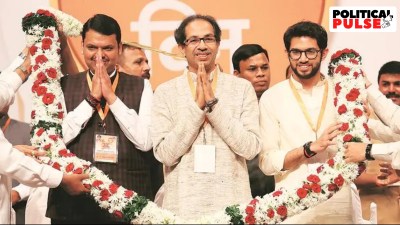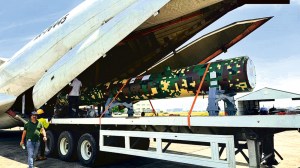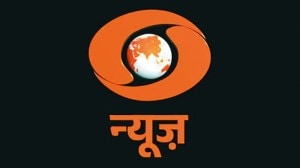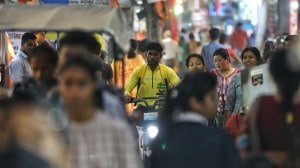- India
- International
Juvenile fishing near Gujarat coast affecting catch size: CMFRI
A decline in mean size of fish will lead to the decrease in relative number of larger specimens, which experts say is a “negative sign” for the fisheries sector, as larger individuals have higher reproductive potential
 Some of the major fish stocks of Gujarat that are showing a decrease in mean length are Tuna, Threadfins, Croakers, Eels, Bombay Duck, Pomfret, Ribbonfish, Cuttlefish, Catfish, Squid, among others.
Some of the major fish stocks of Gujarat that are showing a decrease in mean length are Tuna, Threadfins, Croakers, Eels, Bombay Duck, Pomfret, Ribbonfish, Cuttlefish, Catfish, Squid, among others.
Raising a red flag over rampant juvenile fishing near Gujarat coast, a study conducted by the Central Marine Fisheries Research Institute (CMFRI) pointed out that catching “immature” fish is fast putting the future of the industry here in a state of jeopardy.
The study conducted by CMFRI’s Veraval regional centre pointed to a drastic reduction in average size or weight of at least 16 fish species, including Pomfret, Ribbon Fish, Tuna, Catfish and Squids. “Earlier, the fishermen used to catch large fish. But in the last five years or so, we have seen that the average size has come down drastically. For instance, a Pomfret that used to be caught by the fishermen in Gujarat five years ago weighed between 500 and 600 grams. Nowadays, they weigh between 200-300 grams,” said Dr Divu D, scientist-in-charge of Veraval Regional Centre of CMFRI, which is part of the Indian Council of Agricultural Research (ICAR).
The catch found in 100 metres of depth in the sea seems to be the most affected. “Gujarat catches Ribbon Fish in huge quantities. This species used to be 140-150 cm in length, but now its length has shrunk to 70-80 cm. Similarly, Groupers used to weigh 10-12 kg, but now the catch brought by the fishermen weigh just 2-3 kg,” he told The Indian Express on the sidelines of an event “FishTech-2019” held last week at Veraval.
Some of the major fish stocks of Gujarat that are showing a decrease in mean length are Tuna, Threadfins, Croakers, Eels, Bombay Duck, Pomfret, Ribbonfish, Cuttlefish, Catfish, Squid, among others.
A detailed analysis of these marine catches indicate that “mean length” of the fish caught by fishermen from Gujarat has reduced. “The mean length is used as one of the indicators to assess the health of the fish stocks. A decline in mean length indicates that fishermen are catching juvenile fish. Much before it attains its maximum size or even reproduce once, these fish are caught,” said Divu who has conducted the study along with Vinaya Kumar Vase, a scientist from CMFRI. The scientists said that the exact quantum of juveniles caught cannot be ascertained as most of them are discarded in the sea especially by the fishermen who operate multi-day trawl nets in the sea for 20-30 days.

A decline in mean size will lead to the decrease in relative number of larger specimens, which experts say is a “negative sign” for the fisheries sector, as larger individuals have higher reproductive potential.
“If the exporters want their processing plants to keep running, they should avoid purchasing immature fish from fishermen, in a way to discourage them from catching juveniles,” said Divu. In the last two years, Gujarat ranked top in the country in fish production and also accounts for 33 per cent of the India’s continental shelf area and 20 per cent of the coastline.
The scientists pointed out that usage of trawlers was adding to the detrimental effect. “Trawl is a blind gear and it does not have any control over the catch. In order to help juveniles escape, a mesh size of 40 mm is required to be kept at the extreme end of the trawl net. At present, this 40 mm mesh size is not suitable. Now as per our study, we think a 60 mm mesh is very essential so that the juvenile fishing can be reduced to a certain extent,” said Vinaya Kumar. Multi-day trawlers accounted for 45 per cent of the total 7.8 lakh tonne of fish catch in Gujarat during 2018.
The scientists pointed out that while fishermen in Gujarat flout the 40 mm rule, Kerala is the only state that has “successfully implemented” the minimum legal size of mesh.
The secretary of National Fishworkers’ Forum (NFF), Manish Lodhari, who is based in Porbandar, said, “The poor catch nearer to the coast is pushing the fishermen into deep sea. Pollution caused by industries located along the Gujarat’s coastline is the main reason. Most of them are forced to go as far as Maharashtra.”
The Gujarat government has also decided to encourage fishermen to go deep sea fishing and is providing financial assistance to build deep sea vessels that will not only travel close to 250 nautical miles but will also replace the existing trawlers that engage in the destructive “bottom trawling.”
Marine fish production constitutes over 85 per cent of the total fish production of the state which is over 8.1 lakh tonne and is among the top five fish producing states in India. In the last few years, the marine fish production in Gujarat grew only to 699,000 tonne in 2016-17 from the 694,000 tonne in 2012-13.
Under the Union government’s scheme for deep sea fishing, the Gujarat government has given approvals for constructing 145 deep sea fishing boats that will help fishermen extend their reach up to 250 nautical miles.
Meanwhile, the pressure of poor catch is forcing the fishermen from Gujarat to explore newer areas. The fishermen
travel to North Karnataka coast and Kerala coast in hunt for a good catch.
Apr 20: Latest News
- 01
- 02
- 03
- 04
- 05






































